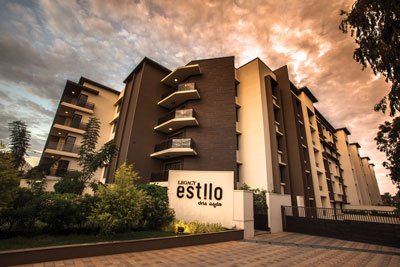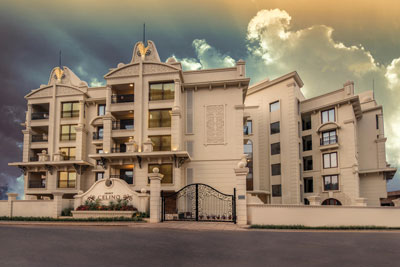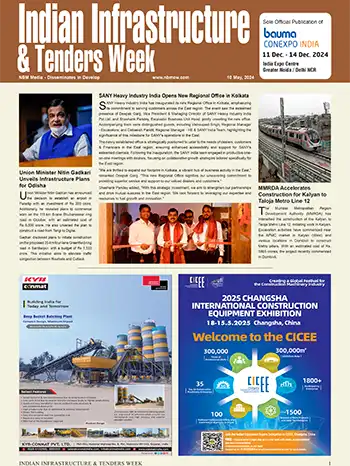Legacy Global Projects Implementation of RERA and GST will bring ease of doing business

What is the current trend prevailing in the Indian market, and how is Legacy Global geared to meet the changing scenario?
There are a number of factors directly or indirectly influencing the real estate industry in our country. On the one hand, we have the Prime Minister’s initiatives with Make in India, Digital India, and the Startup India Hub that will fuel the economy to the extent that we will get to see a depletion in the poverty line and a surge in the middle and high-income categories.
On the other hand, we are celebrating policy reforms and implementation of regulatory bodies like RERA and GST. Our FDI inflows have hit a new high of $43 billion in FY17. This is testament to the confidence the world has in our country’s economy. The results of these developments will ultimately trickle down to the real estate sector, with high demand in different segments of housing.
The global exposure derived from these developments will only shoot demand for high quality projects, irrespective of the segment. This is precisely where Legacy’s strength lies. We look forward to matching steps with the country’s economy, and expand into the low and mid segment of housing, as we maintain our signature style with luxury housing.
What impact do you see of RERA on India’s real estate market?
The impact we are all looking forward to is increased faith in the sector. Negative experiences are an outcome of dealing with fly-by-night operators who have left buyers with a negative perception of the real estate sector, and which keeps them away from genuine investment opportunities. The lack of a government body that protects buyers’ interests has further fueled the reluctance to take a chance with real estate. RERA is that very assurance. A more positive buyer mindset is ultimately good news for developers. Transparency has never been a hassle for genuine brands in the market. We look forward to the support of our buyers and the government, as we make our way through the learning curve that RERA projects.
What is your take on GST?

How do you look at PM’s Housing for all by 2022 and Smart Cities Initiatives?
As a proud real estate brand of this country, it is our dream to witness every citizen progress to a home that is equipped with optimal living conditions. Housing for all and 100 smart cities are both initiatives towards urbanization.
Smart cities are a much-required step to support the IT boom that has left metro cities with unplanned infrastructure as a result of the rampant growth. This initiative is our opportunity to plan the expectant surge in economy in a manner that gives it a further boost. We are looking forward to a thrust in the middle and high-income category owing to the initiatives of the government. Startup business of the likes of ecommerce especially come with a host of ancillary services, and this category finds it difficult to afford living in the existing complex structure of metro cities. Smart city will accommodate this load and give it ample space to thrive.
Both these initiatives require a considerable investment of resources including technology, skill training, finance and management. City infrastructure will need a major boost to support the intent. Also, there are certain aspects under the bylaws of affordable housing that needs to be looked into. For example, it may not be feasible to provide one car park of 5.5m*2.5m (which can effectively fit a BMW or a Mercedes) for every two units under 50 sq.m. This only adds to the cost where the demand for car park is expected to be very low.
It is also these challenges that double up as massive opportunities. Private players in every sector can contribute in achieving this mission. Effective PPP will be the right approach.
According to a report, tier-II and tier-III cities are being reckoned as the growth engines of the future. How do you view your business growth in these cities?

However, there are a number of factors to consider before a brand plans an expansion. There are State Government-level regulatory challenges, local municipal laws, knowledge of the local markets to be studied, and so on. Although we don’t have any immediate plans of expansion to these cities, we will continue to evaluate and study the market, and take a call when the right opportunity presents itself.
Different states have different formula for arriving at floor space index (FSI). Do you think that a rational approach in fixing FSI ratio is called for to sort out housing requirement, enabling more built-up area both for the developer as well as for house owner?
Each city is unique in terms of its complexity, dynamic growth patterns and differential levels of infrastructure. Similarly, there is a variation in land valuation owing to its native conditions. A rationale approach to fixing FSI that leads to a higher FSI value will work in favor of the developer. But it is more feasible to consider a higher FSI as we move away from the Central Business Districts towards the city outskirts, where, with the support of the government in terms of planned infrastructure, we can work with a greater built-up area.
However, to maintain uniformity in terms of development, we may want to consider a better FSI for redevelopment projects in core city areas.
Going vertical is another trend. How do you see the prospect of high-rise construction in India, and what are the major challenges?

Statutory clearances and time taken for sanctions is a major factor. Although the government has been receptive to our requirements, progress towards luxury high rise is moving at a slow and steady pace. As various reforms come into place that make clearances less of a hassle, we will see some major activity in the segment.
The cost of construction is also relatively high for verticals. We will have to study the market in its current dynamic stage to understand its willingness to shell out the required price. If we are looking at projects in the definition of a G+80 high rise, equipment to support the construction will have to be imported. Also, manpower will have to be trained for efficient utilization of resources, which otherwise adds to cost. Going vertical will emerge as a trend more and more as good land parcels become scarce.
What technology is Legacy Global using to construct sustainable projects?
We are always on the lookout for technology that will make our projects more sustainable. Currently, we are looking at adopting advanced technologies to enable our projects with solar power. Energy efficiency is another area we are looking at by replacing CFL and halogens with LEDs. We are also evaluating motion detectors to automate lighting systems in common areas and utilities. We have Rain Water Harvesting implemented in all our projects but we are looking at methods to increase catchment and capacity for storage to further reduce our dependency on borewell resources. STP systems that come pre-installed in the projects further enable us to recycle water and use it for landscaping.
We have invested in assets that assist us in seamless execution of our current projects. The intention is to continue investment in state of the art infrastructure to support our expansion plans. We constantly evaluate technology that enables us to imbibe advance efficient systems.
We are pioneers in the ultra-luxury segment, so ensuring the best quality for our customers is very important for us. Currently, we have around 9 ongoing projects in prices ranging from `3 to 14 crore, and 2 projects in the aspirational segment in the price range of `40 lakh to 2 crore. Our Legacy Cirocco project won the prestigious Asia Pacific International Property Award in the category - Residential High Rise, India, 2017-18.
NBM&CW July 2017


















